Introduction
In aesthetic medicine, understanding the structure of the skin and how different laser wavelengths penetrate to specific depths is essential for optimizing treatment outcomes. Choosing the right device based on laser wavelength penetration depth and target chromophore allows for safer, more effective results. This article will help you scientifically match skin layers with appropriate laser wavelengths and device indications.
Understanding Skin Layer Structure and Thickness
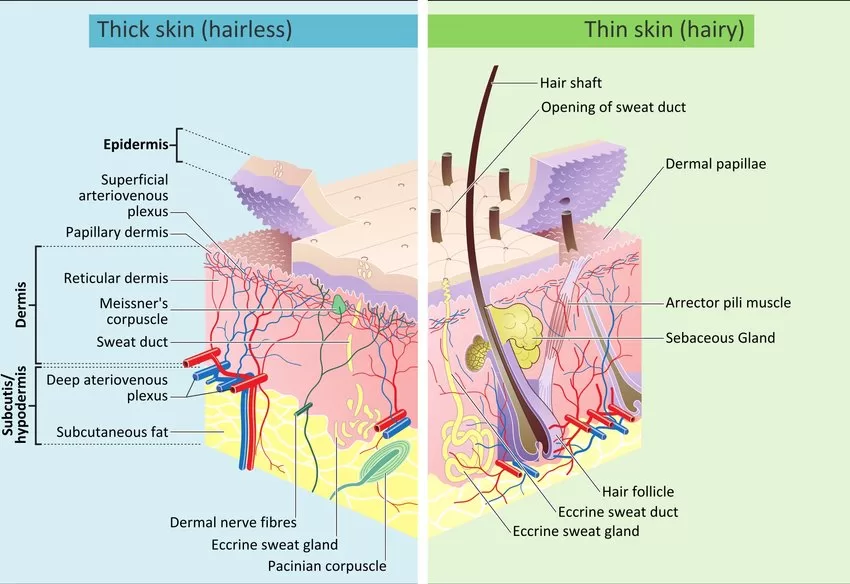
The outermost layer of the skin is the epidermis, which is avascular and composed of several sublayers arranged from outside to inside: the stratum corneum, stratum lucidum (found only on the palms and soles), stratum granulosum, stratum spinosum, and stratum basale. The integrity, thickness, texture, and hydration level of the epidermis play a crucial role in determining both the appearance and physiological function of the skin.
Beneath the epidermis lies the dermis, a dense connective tissue composed primarily of fibroblasts, collagen and elastic fibers, and extracellular matrix. The upper portion of the dermis, closest to the epidermis, is known as the papillary dermis, while the deeper portion is the reticular dermis, with no distinct boundary between them. The dermis serves as the “lifeline” of the skin, providing essential nutrients to the epidermis.
Between the epidermis and dermis is the basement membrane zone, a critical structure in skin regeneration. In cases of injury or surgery, as long as the wound does not breach the basement membrane or damage the rete ridges embedded in the superficial dermis, the basal layer can complete the repair, allowing the skin to return to its original state without scarring.
The subcutaneous tissue lies beneath the dermis and consists of loose connective tissue and adipose tissue. Fat tissue acts as an energy reserve, provides thermal insulation for body temperature regulation, helps shape body contours, and supports endocrine balance.
The total thickness of the skin (epidermis + dermis + subcutaneous fat) ranges from 4,500 to 10,100 μm (i.e., 4.5–10.1 mm). The typical epidermal thickness is about 100 μm, and the papillary dermis is generally no more than twice the thickness of the epidermis. On the face, the epidermis is even thinner, approximately 60 μm.
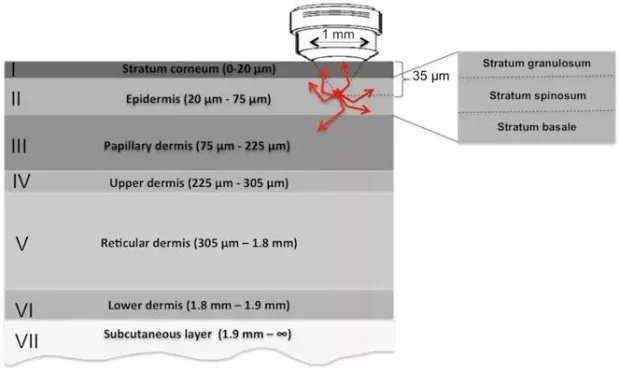
Skin thickness (Layers I–VI): 2.425–4.325 mm, with an average of 3.375 mm
Source: In vivo multiphoton NADH Fluorescence reveals depth-dependent Keratinocyte Metabolism in Human Skin, Biophysical Journal, January 8, 2013.
How to Choose Laser Wavelengths
The Science of Selective Photothermolysis
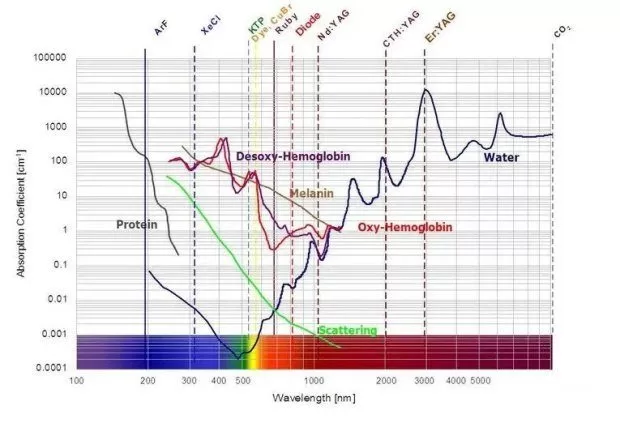
Skin tissue contains pigments, water, and oxyhemoglobin, each of which absorbs only specific wavelengths of light—a phenomenon known as selective absorption. For example, dye lasers at 595 nm target oxyhemoglobin (red), Nd:YAG lasers at 532 nm target melanin (black), and Er:YAG lasers at 2940 nm target water (colorless). Understanding the absorption wavelengths of each target chromophore is essential for selecting the most appropriate laser treatment device.
Source: Treatment of Hypertrophic and Resistant Port Wine Stains With a 755nm Laser: A Case Series of 20 Patients, Lasers Surg Med. 2009 Aug
Penetration Depth of Common Laser Wavelengths
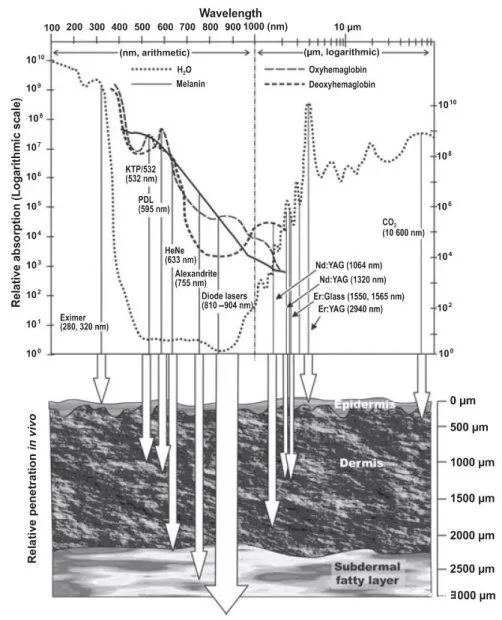
| Wavelength | Target | Penetration Depth |
|---|---|---|
| 1064nm (Nd:YAG) | Deep vessels | 2–8mm |
| 755nm (Alexandrite) | Hair/melanin | 0.9–2.1mm |
| 694nm (Ruby) | Melanin | 0.75mm |
| 595nm (PDL) | Hemoglobin | 0.6–1.2mm |
| 532nm (KTP) | Superficial melanin | <1mm |
Source: Treatment of periorbital wrinkles with 1550- and 1565-nm Er:glass fractional photothermolysis lasers: a simultaneous split-face trial, J Eur Acad Dermatol Venereol. 2011 Jul
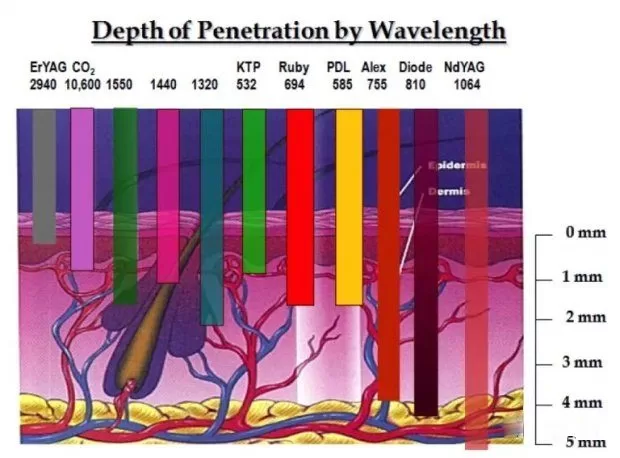
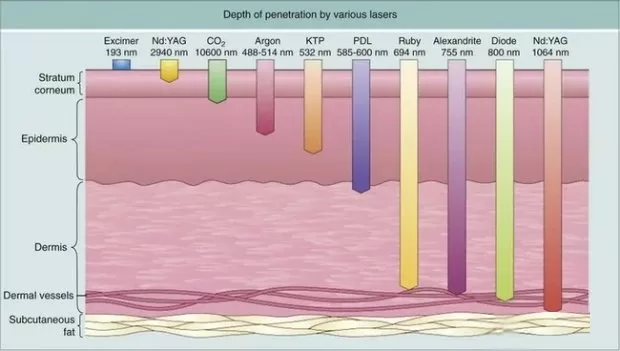
Laser energy also affects penetration:
- <10mJ: Superficial dermis (spots, melasma)
- 10–20mJ: Mid-reticular dermis (fine lines)
- 20–40mJ: Deep reticular dermis (pores, moderate wrinkles)
- 40–70mJ: Deeper scars, surgical scars, deep wrinkles
Matching Wavelengths to Laser Equipment and Indications
1. Vascular Lasers
| Target Vessel Size | Recommended Wavelength |
|---|---|
| >3mm (varicose veins) | Endovenous 1320nm |
| 1–3mm (leg veins) | Long-pulse 1064nm |
| 0.1–1mm (facial vessels) | Pulsed Dye 595nm |
| <0.1mm | IPL 540–1200nm |
Laser Machines: PicoIris® Pico Laser Machine, RFMStar™ RF Microneedling Machine, Fractional Master™ CO2 Laser Machine
Indications: spider veins, angiomas, rosacea, port-wine stains, vascular scars, psoriasis
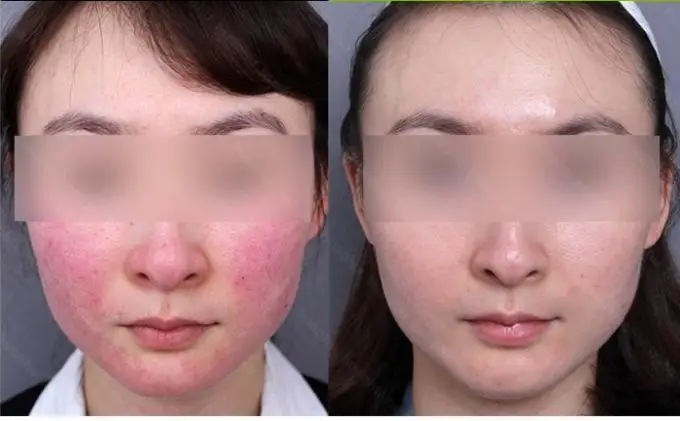
2. Pigmented Lesion Lasers
| Type | Wavelength |
|---|---|
| Superficial | IPL 560nm/640nm |
| Deep melanin | Q-switched 694/755/1064nm |
Laser Machines: PicoIris® Pico Laser Machine, Fractional Master™ CO2 Laser Machine
Indications: tattoos, freckles, melasma, lentigines, birthmarks
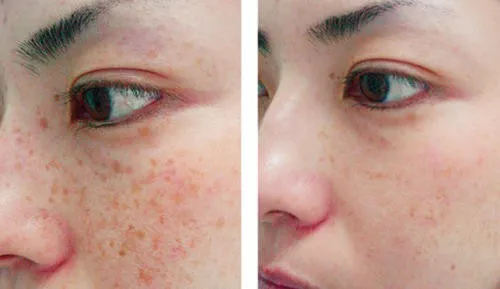
3. Hair Removal Lasers
| Device | Wavelength |
|---|---|
| GentleLase (755nm) | Alexandrite |
| Diode Laser (800nm) | Semiconductor |
| GentleYAG (1064nm) | Nd:YAG |
| IPL | 694/755nm |
Laser Machines: EosICE® Hair Removal Machines
Indications: axillary, leg, bikini, beard, and facial hair
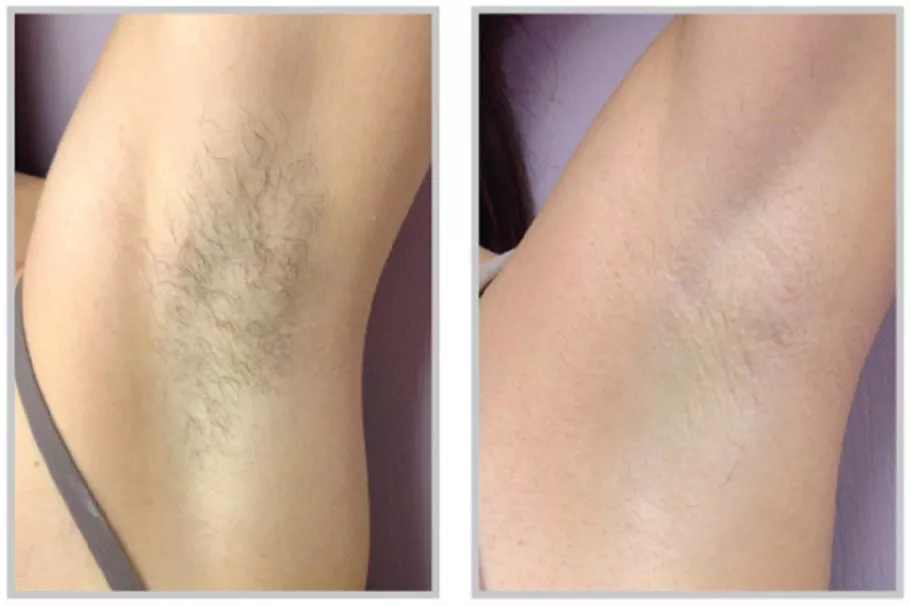
4. Resurfacing & Skin Texture Improvement
| Type | Wavelength |
|---|---|
| Ablative | CO₂, Er:YAG 2940nm |
| Non-Ablative | 1550nm Fractional |
| Rejuvenation | IPL 560–1200nm, RF |
Laser Machines: PicoIris® Pico Laser Machine, RFMStar™ RF Microneedling Machine, Fractional Master™ CO2 Laser Machine
Indications: skin texture, pores, vascular lines, superficial pigmentation
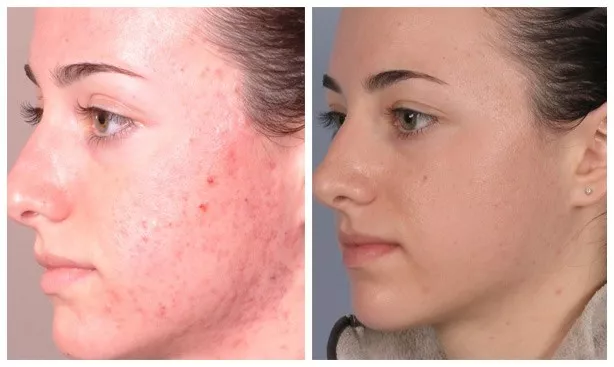
5. Skin Tightening & Lifting
| Modality | Devices |
|---|---|
| Radio Frequency | V-Shape PLATINUM® |
| HIFU | MFUpro™ |
Laser Machines: MFUpro™ Skin Lifting Machine, V-Shape PLATINUM® Face&Body Contouring Machine
Indications: sagging skin, wrinkles, jawline lifting
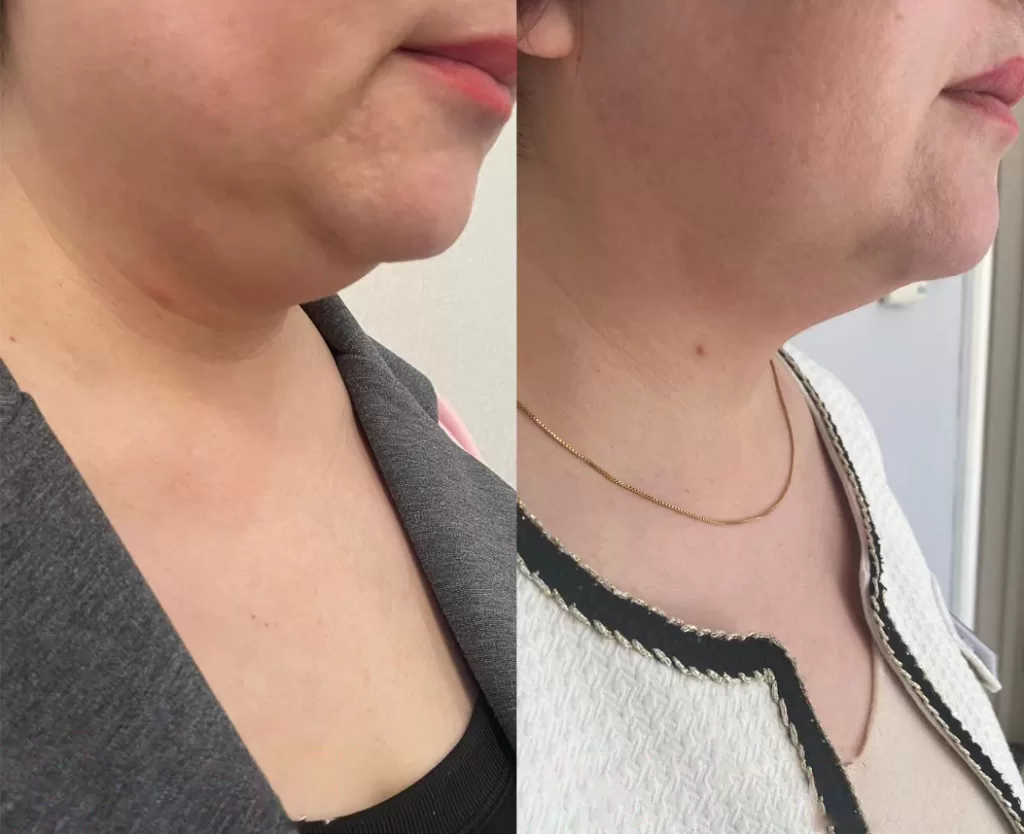
6. Body Contouring
| Technology | Devices |
|---|---|
| HIFU | V-Shape PLATINUM®, Ucurve™ |
| Cryolipolysis | CoolSlimming™ |
Laser Machines: V-Shape PLATINUM® Face&Body Contouring Machine, Ucurve™ Lipo Laser Machine, CoolSlimming™ Fat Freezing Machine
Indications: abdomen, flanks, thighs, arms
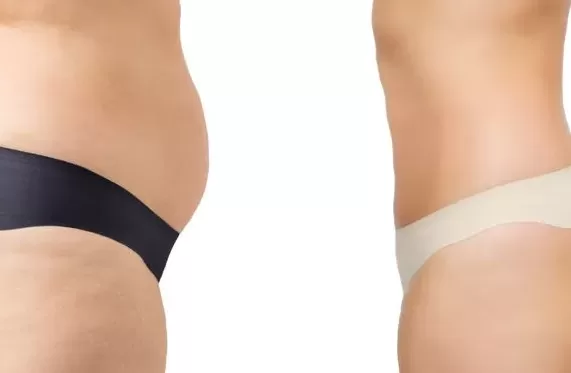
Conclusion
Understanding how laser wavelengths interact with different skin layers is key to selecting the most effective device for each indication. Whether you’re treating pigmentation, vascular issues, or performing skin rejuvenation, mastering these technical foundations allows for smarter treatment planning and better patient outcomes.






